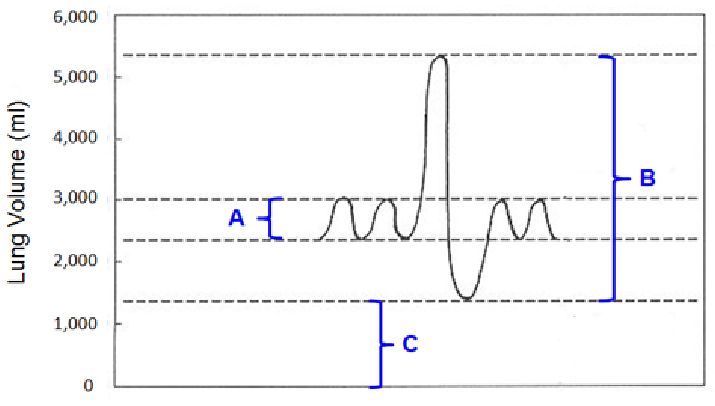Variation that approximates a bell-shaped curve when plotted on a bar graph is
a. undergoing disruptive selection.
b. undergoing stabilizing selection.
c. quantitative variation.
d. qualitative variation.
e. in genetic equilibrium.
D
You might also like to view...
In the below graph, if Bracket A represents the tidal volume and Bracket B represents the vital capacity, respectively, of a young man, what does Bracket C represent?

A. air that is not used for gas exchange
B. air with a concentration of oxygen higher than that of air outside the body
C. anatomical dead space
D. air from a previous breath that does not mix with newly-inhaled air of the next breath
E. air that helps keep the alveoli inflated (open) after forced exhalation
Clarify Question
What is the key concept addressed by the question?
What type of thinking is required?
Gather Content
What do you already know about the lungs? What other information is related to the question?
Choose Answer
Given what you now know, what information is most likely to produce the correct answer?
Reflect on Process
Did your problem-solving process lead you to the correct answer? If not, where did the process break down or lead you astray? How can you revise your approach to produce a more desirable result?
How is brain growth in humans different from other mammals?
A. In humans brain growth continues after birth. B. In humans brain growth is complete by the third trimester. C. In humans brain growth stops at birth. D. Human growth is not allometric. E. Only humans develop a cerebrum.
Which of the following is NOT a term related to information transfer in living systems?
a. genes b. taxon c. proteins d. neurotransmitters e. hormones
How much does the expected heterozygosity decrease each generation?
a. 1/2N b. 1 1/2N c. 2pq(1-F) d. 2pqF e. 4NF